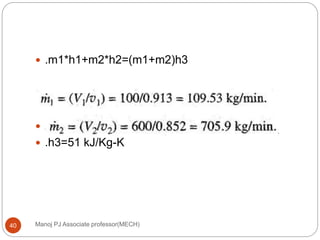The document discusses psychrometric charts and their use in analyzing air conditioning processes and calculating air properties. It provides an example problem of calculating properties for an air sample with a dry bulb temperature of 40°C and wet bulb temperature of 28°C. It also discusses sensible and latent heating/cooling, mixing of air streams, and includes sample problems calculating psychrometric properties and air conditioning system design values.



















































































































